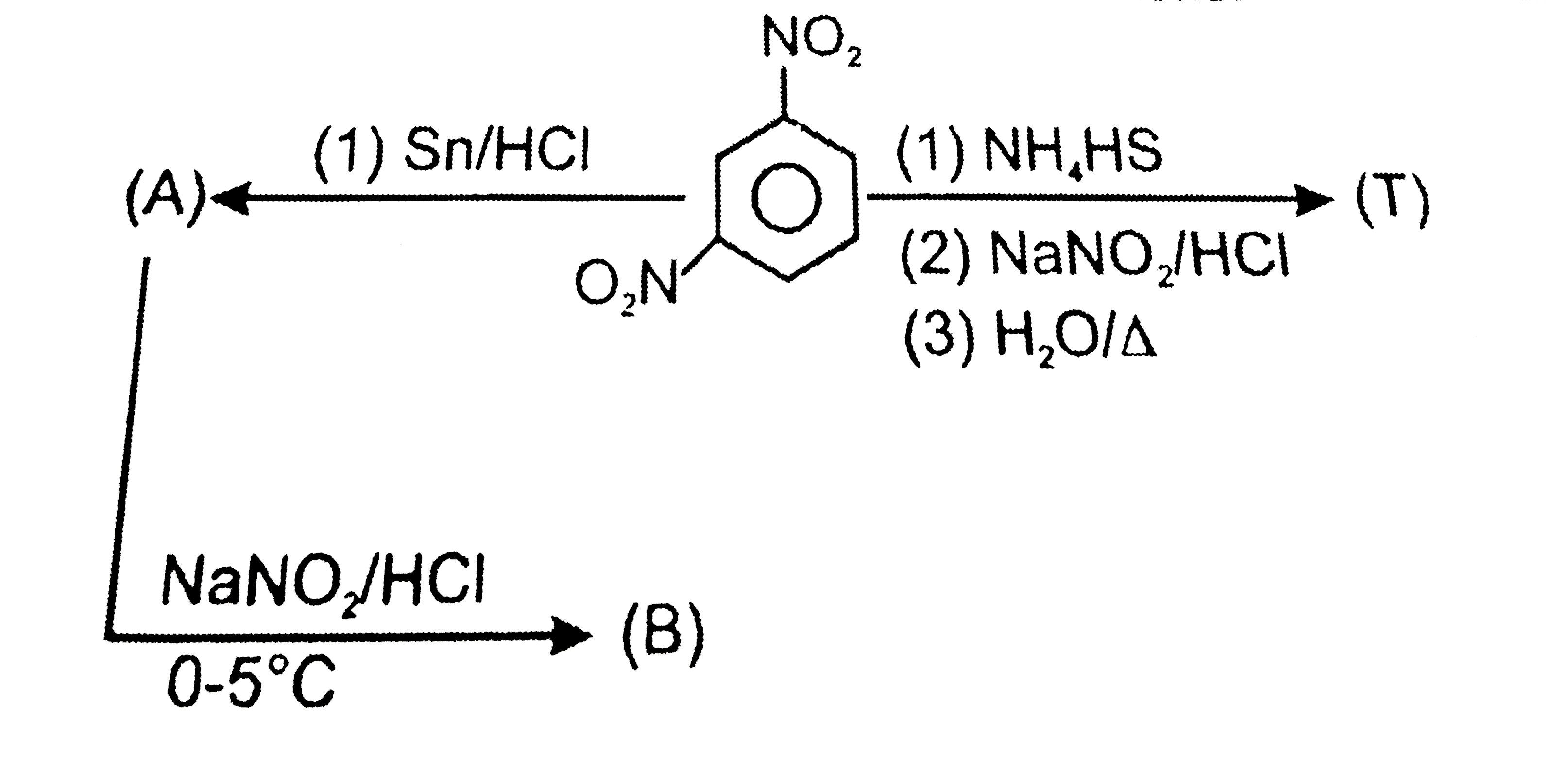A white 'A' on heating decomposes to produce two products 'B' and 'C'. 'B' on reaction with white phosphorous produces 'D', which is a strong dehydrating agent. 'D' on reaction with perchloric acid converts it to its anhydride.
The number of moles of H2O needed to hydrolyse (complete) 1 mole of D is:
10
4
6
2
The correct Answer is:C
NH4NO3Δ−−→N2O+H2O
N2O+P4→P4O10+N2
HClO4+P4O10→Cl2O7+HPO3
A=NH4NO3,C=H2O,D=P4O10
P4O10+6H2O→4H3PO4.
Topper's Solved these Questions
- BOOK - NARAYNACHAPTER - 15TH GROUP ELEMENTSEXERCISE - Complete the following reactions25videos
15TH GROUP ELEMENTS
- BOOK - NARAYNACHAPTER - 15TH GROUP ELEMENTSEXERCISE - Example15videos
15TH GROUP ELEMENTS
- BOOK - NARAYNACHAPTER - 15TH GROUP ELEMENTSEXERCISE - Level-V163videos
15TH GROUP ELEMENTS
- BOOK - NARAYNACHAPTER - ELECTRO CHEMISTRYEXERCISE - SUBJECTIVE QUESTIONS48videos
ELECTRO CHEMISTRY
- BOOK - NARAYNACHAPTER - 16 TH GROUP ELEMENTS EXERCISE - EXERCISE - 4 NCERT EXAMPLERS/H.O.T.S.18videos
16 TH GROUP ELEMENTS
Similar Questions
An alkyl halide C5H11 (A) reacts with ethanolic KOH to give an alkene 'B' which reacts with Br2 to give a compound 'C' which on dehydromination gives an alkyne 'D' . On treatment with sodium metal in liquid ammonia one mole of 'D' give one mole of the sodium salt of 'D' and half a mole of hydrogen gas . Complete hydrogenation of 'D' yields a straight chain alkane. Identify A, B, C and D . Give the the reactions involved.
View SolutionAn alkyl halide C5H11 (A) reacts with ethanolic KOH to give an alkene 'B' which reacts with Br2 to give a compound 'C' which on dehydromination gives an alkyne 'D' . On treatment with sodium metal in liquid ammonia one mole of 'D' give one mole of the sodium salt of 'D' and half a mole of hydrogen gas . Complete hydrogenation of 'D' yields a straight chain alkane. Identify A, B, C and D . Give the the reactions involved.
View Solution
Knowledge Check
- Question 1 - Select One
A white 'A' on heating decomposes to produce two products 'B' and 'C'. 'B' on reaction with white phosphorous produces 'D', which is a strong dehydrating agent. 'D' on reaction with perchloric acid converts it to its anhydride.
The compound 'A' is:ANH4NO3BNH4NO2C(NH4)2Cr2O7DNH4CIO4 - Question 2 - Select One
A white 'A' on heating decomposes to produce two products 'B' and 'C'. 'B' on reaction with white phosphorous produces 'D', which is a strong dehydrating agent. 'D' on reaction with perchloric acid converts it to its anhydride.
The product obtained on hydrolysis (complete) of D is:Amixture of H3PO3 and H3PO4Bonly PH3Conly H3PO4Dmixture of H3PO3 and H3PO2 - Question 3 - Select One
Me3C−MgCl on reaction with D2O produces :
AMe3CDBMe3CODC(CD)3CDD(CD)3COD.
H2S (5 moles) reacts completely with acidified aqueous potassium permanganate solution. In this reaction, the number of moles of water produced is x, and the number of moles of electrons involved is y. The value of (x+y) is ____.
View SolutionA colourless inorganic salt (A) decomposes completely at about 25∘C to give only two products, (B) and (C ), leaving no residue. The product (C ) is a liquid at room temperature and neutral to moist litmus paper while the gas (B) is a neutral oxide. White phosphorus burns in excess of (B) to produce a strong white dehydrating agent. Write balanced equations for the reactions involved in the above process.
View SolutionObserve the following reactions and answer the following questions

The product B on heating with H2O produces :View SolutionFor the sequential reactions:
2A80%−−→3B+C
2B50%−−→5D+E
Moles of A needed for the formation of 1.5 moles of D is:View SolutionAccording to following reaction:
A+BO3⇒A3O4+B2O3
The number of moles of moles of A3O4 produced if 1 mole of A is missed with mole of BO3 is:View Solution

